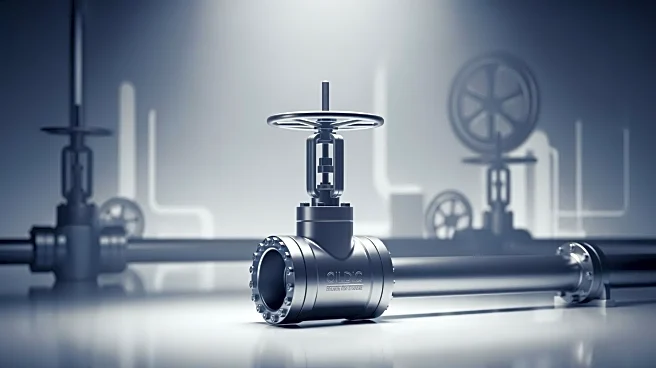What's Happening?
The U.S. single-use bioprocessing market is anticipated to grow significantly, with projections estimating its value to reach USD 39.24 billion by 2034. This growth is driven by a compound annual growth rate (CAGR) of 15.06% from 2025 to 2034. The market involves
the use of disposable equipment such as bags and filters in the manufacturing of biopharmaceuticals, offering advantages over traditional reusable systems. These benefits include reduced risk of cross-contamination, lower capital expenditure, and increased operational flexibility. The demand for biologics and personalized medicines, along with technological advancements, are key factors contributing to the market's expansion. The simple and peripheral elements segment led the market in 2024, while the apparatus and plants segment is expected to grow notably in the coming years.
Why It's Important?
The growth of the single-use bioprocessing market is significant for the biopharmaceutical industry, as it addresses the need for faster development cycles and improved reliability in manufacturing processes. The adoption of single-use systems can lead to cost savings and efficiency improvements, which are crucial for companies looking to innovate and scale their operations. This market expansion reflects the increasing demand for biologics and personalized medicines, which are becoming more prevalent in healthcare. As the industry shifts towards these advanced therapies, single-use bioprocessing offers a solution to meet production demands while maintaining high standards of safety and quality.
What's Next?
The market is expected to continue its growth trajectory, with the apparatus and plants segment poised for notable expansion. As technological advancements improve the reliability and scale of single-use components, more biopharmaceutical manufacturers are likely to adopt these systems. The academic and clinical research institutes segment is also expected to witness rapid expansion, indicating a broader application of single-use bioprocessing in research settings. Stakeholders in the industry may focus on further innovation and development to enhance the capabilities of single-use systems, potentially leading to new applications and increased market penetration.
Beyond the Headlines
The shift towards single-use bioprocessing systems may have broader implications for the biopharmaceutical industry, including changes in manufacturing practices and supply chain dynamics. The reduction in cleaning and sterilization protocols could lead to more sustainable practices, minimizing environmental impact. Additionally, the increased flexibility and reduced risk of contamination may encourage more companies to explore novel therapies and production methods, potentially accelerating the development of new treatments.













